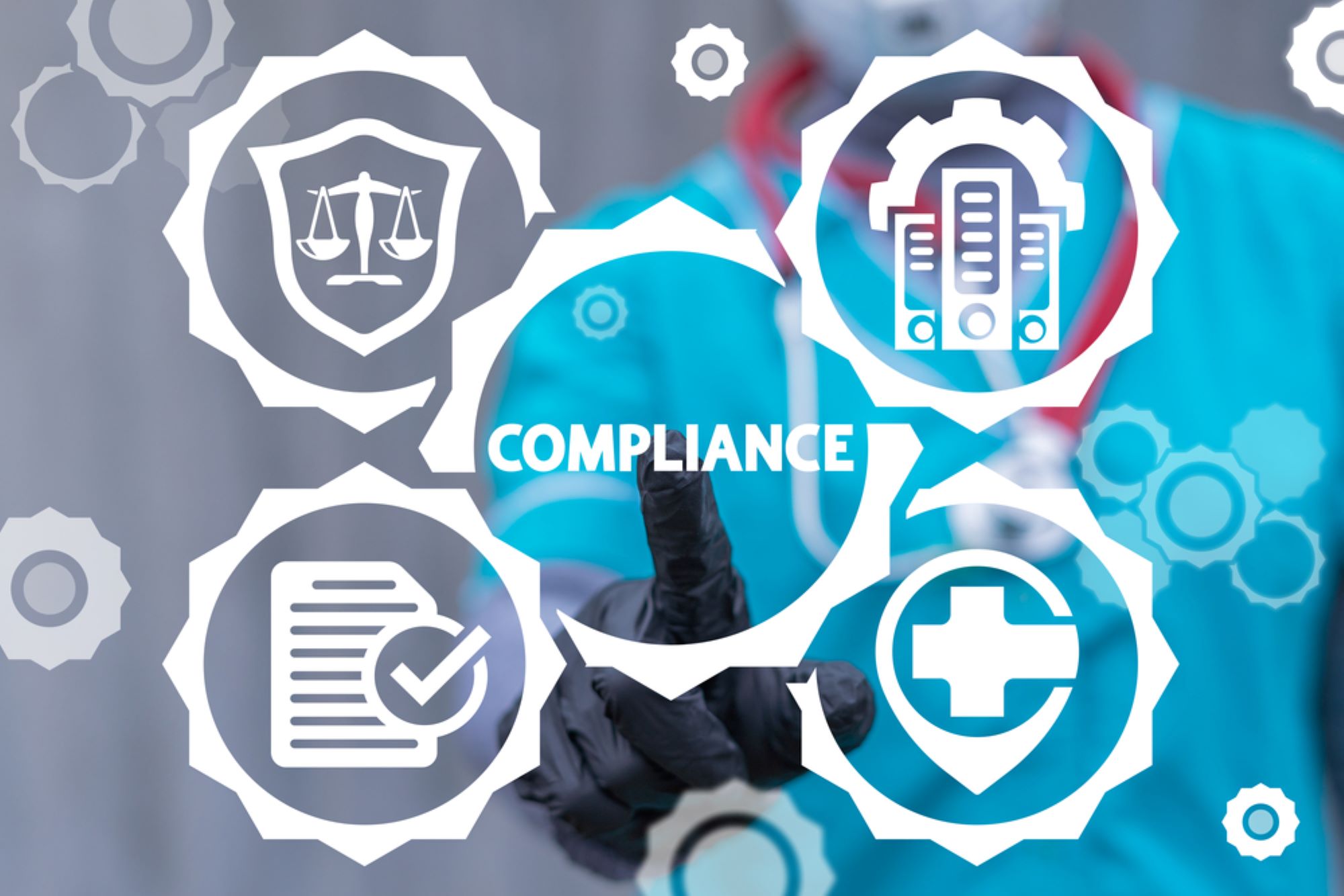
A unified approach to EHS compliance
Managing compliance effectively is critical for employers to avoid costly setbacks and maintain operational stability. Yet many organizations face heightened risks due to inefficient processes and disjointed systems.
A 2018 study in Knowledge and Information Systems found that organizations with fragmented compliance systems face up to 40% higher risks of regulatory fines and operational delays. Yet despite these risks, many organizations continue to rely on outdated systems and manual processes to tackle tasks like audits, incident reporting, and safety training.
Imagine this scenario: A regulatory audit is announced, and your team is forced to scramble to gather documentation scattered across outdated spreadsheets, disconnected platforms, and email inboxes. Deadlines are missed, mistakes are uncovered, and your organization is hit with financial penalties and reputational damage. Unfortunately, this is the reality for many businesses struggling to keep pace with the growing complexity of compliance in today’s ever-changing regulatory landscape.
As regulations continue to evolve, the risks of inefficiency, noncompliance, and operational disruption are greater than ever. A compliance management solution is no longer optional in this environment—it’s essential. Such a solution ensures adherence to laws and supports the long-term safety, efficiency, and success of the workplace.
A unified solution for risk management
Organizations often choose a compliance management solution to address common challenges like fragmented processes, inconsistent enforcement of policies, and difficulty keeping up with evolving regulations. Managing audits, incident reporting, and safety training manually or across disconnected systems can lead to inefficiencies, missed deadlines, and increased risk of noncompliance.
A reliable compliance management solution should be tailored to meet the unique regulatory and safety requirements of your industry. It must include tools to manage environmental compliance, workplace safety, and risk mitigation while aligning with relevant laws and standards.
The best solutions go beyond basic compliance, offering advanced capabilities like real-time reporting, automated alerts, and mobile access for on-the-ground management. These functionalities empower teams to stay informed and responsive while maintaining a clear audit trail for inspections. By comprehensively addressing both current and evolving regulatory requirements, the right solution ensures compliance while fostering a safer, more efficient workplace.
Reducing risk through proactive audits and safety training programs
Reducing risk starts with a proactive approach to audits and safety training programs. Regular audits help identify potential hazards and compliance gaps before they escalate into costly incidents. By systematically reviewing processes, equipment, and workplace conditions, organizations can implement corrective actions to mitigate risks and ensure regulatory adherence. Proactive audits also build a culture of accountability, keeping teams aligned with safety objectives and fostering continuous improvement.
Safety training programs complement these efforts by equipping employees with the knowledge and skills needed to recognize and address risks in real time. Effective training ensures safety procedures are consistently followed, reducing the likelihood of errors or accidents. Combined with data from audits, training programs can be tailored to address specific vulnerabilities, creating a comprehensive risk management strategy that protects both employees and the organization.
Reducing risk through proactive audits and comprehensive safety training programs is essential to fostering a safe and compliant workplace, but true efficiency lies in integrating these efforts within a unified compliance management solution.
A unified compliance management solution brings all essential elements—plans, procedures, and performance metrics—into a single, cohesive platform. It enables organizations to centralize and standardize their compliance efforts, ensuring consistent implementation across teams and locations. By integrating tools for tracking leading and lagging indicators, the solution provides actionable insights, helping organizations proactively address risks and measure the effectiveness of safety initiatives.
This unified approach eliminates silos and streamlines workflows. It also ensures all compliance aspects are interconnected so updates to one area automatically reflect across the system. With real-time data and comprehensive reporting, organizations can maintain a clear view of their compliance status, improve decision-making, and drive continuous improvement across all levels.
Must-have features in an EHS compliance solution
- Complete instructor-led training (ILT) materials, including handouts, speaker notes, presentation slides, and quizzes. These classroom training resources span hundreds of areas, including lockout/tagout (LOTO); slips, trips, and falls; job hazards analysis; and many more.
- Manage and train on the go with bite-size courses on popular safety topics. Each class includes notes and tracking that streamline compliance obligations.
- Create custom environmental and safety plans that meet your organization’s needs in minutes from our library of preloaded templates that allow for easy customizations. Regulatory specifications are updated based on your selections.
- Navigate complex regulations and stay current with the latest regulatory compliance changes.
- Clear and concise regulatory answers to your most pressing environment, health, and safety (EHS) questions from seasoned industry experts.
- Easily search a safety data sheet (SDS) database for up-to-date SDSs.
- Stay current on federal and state environmental and safety regulations, from proposal to final regulation.
- Thousands of ready-to-use EHS downloads, including checklists, forms, guidance documents, and posters.
While identifying the top features of a compliance management solution is critical for ensuring operational efficiency and effectiveness, it’s equally important to consider the potential risks of falling behind on compliance with evolving regulations. Without staying ahead of these changes, organizations face significant consequences, including legal penalties, reputational damage, and operational disruptions, underscoring the need for a scalable solution that adapts to the dynamic regulatory landscape.
The cost of noncompliance
- According to the Office of the Federal Register, there are about 3,000 to 4,500 final rules published each year. Many of them are routine, but some can impose a substantial economic or legal burden.
- The U.S. Environmental Protection Agency (EPA) reported record-breaking Clean Air Act cases, including a $64.5 million civil penalty against Marathon Oil Company for violations at over 200 facilities.
Avoiding risk requires a proactive approach that identifies potential vulnerabilities before they lead to costly consequences. Regular audits, comprehensive risk assessments, and ongoing monitoring are essential to pinpoint weaknesses in processes, compliance, and safety practices. By addressing these risks early, organizations can implement preventive measures, such as updated procedures or enhanced training programs, to reduce exposure and ensure regulatory adherence.
Fostering a culture of accountability and preparedness is equally important. Clear communication of compliance goals and consistent enforcement of safety standards empower teams to make informed decisions that prioritize risk avoidance. Leveraging technology, such as real-time reporting tools and unified compliance platforms, provides the visibility needed to respond quickly to emerging risks and maintain operational resilience.
See the solution in action
A scalable compliance management solution grows with your organization, adapting to changes in size, complexity, and regulatory requirements. It should accommodate additional users, sites, and evolving compliance needs without compromising performance or functionality. Scalability ensures that the solution remains a reliable foundation for managing compliance across diverse operations as your organization grows.
Selecting a solution with a user-friendly interface will simplify adoption and usage across all levels of your organization. Intuitive design and accessible tools reduce training time and encourage consistent usage. Compatibility with existing systems and processes ensures seamless integration, minimizing disruption while maximizing efficiency. The right solution works harmoniously within your current infrastructure, enhancing workflows rather than requiring extensive overhauls.



